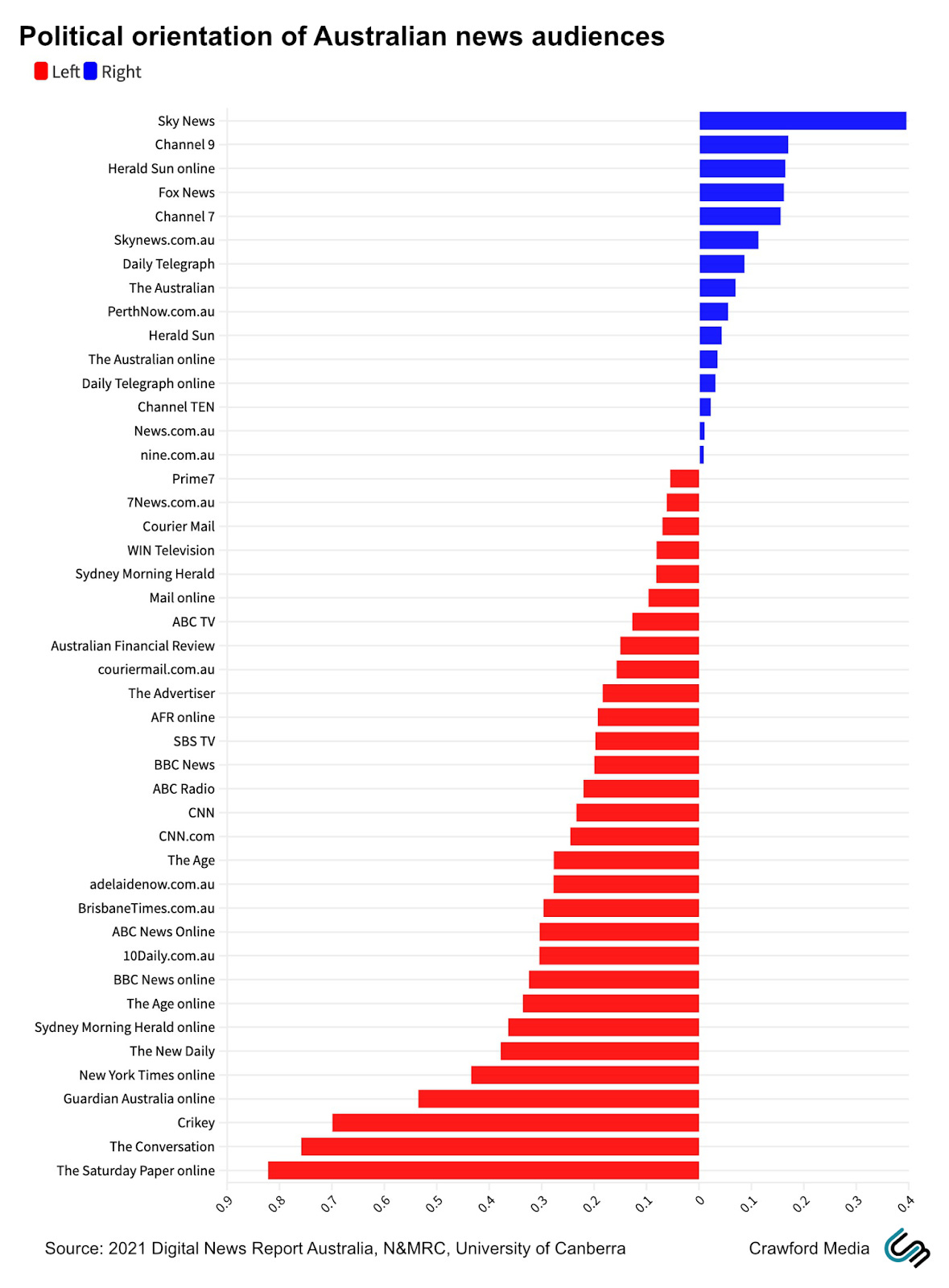
This week I’m gazing into the crystal ball, an undertaking that usually ends badly. Nevertheless … I have written a piece for The Spinoff predicting the movement of New Zealand news outlets away from the political centre and towards the periphery. My argument is pretty simple: in a recently consolidated national market for attention, there are strong incentives for big news brands to differentiate their product. One of the few available means of differentiating a general news offering is to move outwards on the political scale. This movement is also encouraged by the way digital networks reward divisive content. Adding further impetus is the adoption of public “missions” which encourage subscriptions and contributions, increasingly important sources of revenue.
If you don’t agree, I’d invite you to step into the shoes of a big general news publisher. It’s not a pleasant body swap. Your revenue is still declining after more than a decade of loss. Even though your subscribers/contributors are growing, there’s not enough of them and their growth isn’t fast enough to offset dwindling print and flat/declining digital ad revenue. Your subs/contributions growth must be accelerated, and you must find new sources of revenue. While the old ideal of general news was objectivity and a centrist position that would appeal to the biggest possible audience, that’s not doing anything for you now. If you explicitly adopt a mission – say, countering the rise of the illiberal left, or on the other hand, advocating social justice and climate change action – you are much more likely to attract subscribers or contributors (see Guardian Australia’s former head of marketing Margy Vary for more on netting contributors). You are also emotionally validated in taking a strong position by your staff and the vocal part of your audience.
The forces that have begun pushing apart the editorial positioning of NZ publishers have been at work in Australia for some time. Have a look at this fascinating graph, based on data from The 2021 Digital News Report Australia, from the News and Media Research Centre at the University of Canberra.

This is not how this information appeared in the report. For this graph, I have included the offline (paper and broadcast) and online outlets on the same scale, and given each publication its own line in order to more easily see the spread.
Note that these numbers do not depict the politics of the publication itself, rather the audiences of the publications. It just so happens that the audience politics line up uncannily with the widely accepted editorial positions of the publishers. The information comes from a statistically representative survey of around 2000 Australians who detail their political orientation and news consumption habits (among other things).
You will see:
- There are more media outlets on the left than right
- All the big TV broadcasters have centrist audiences (within the central -.2 and .2 band).
- Online outlets are more left-wing than their offline counterparts, a fact probably attributable to their younger audiencesSo far so good. All this is what you would expect. Some of the more surprising aspects:
- Fox News audiences in Australia are less right-wing than Sky News audiences (possibly a very small sample size?)
- The Australian Financial Review’s audience is marginally left
- The Australian’s audience (online and offline) is almost dead centre
This report is part of the global Reuters Institute survey series. I became aware of this political orientation data through an interesting study which indicated news “echo chambers” were possibly not real, or at least not a big thing. The authors of that paper found, based on the political leanings of audiences in surveyed countries, that most groups had exposure to multiple news sources including centrist media.
Sign up to the Crawford Media newsletter and podcast.
